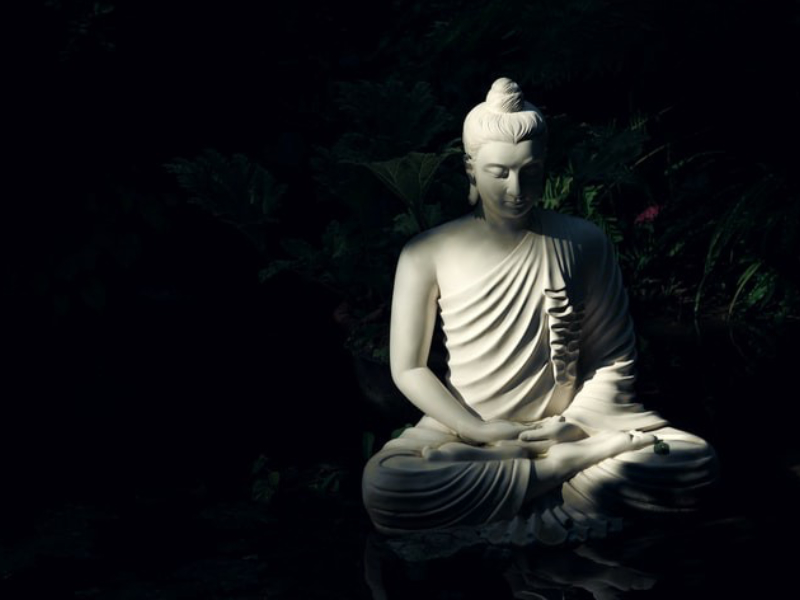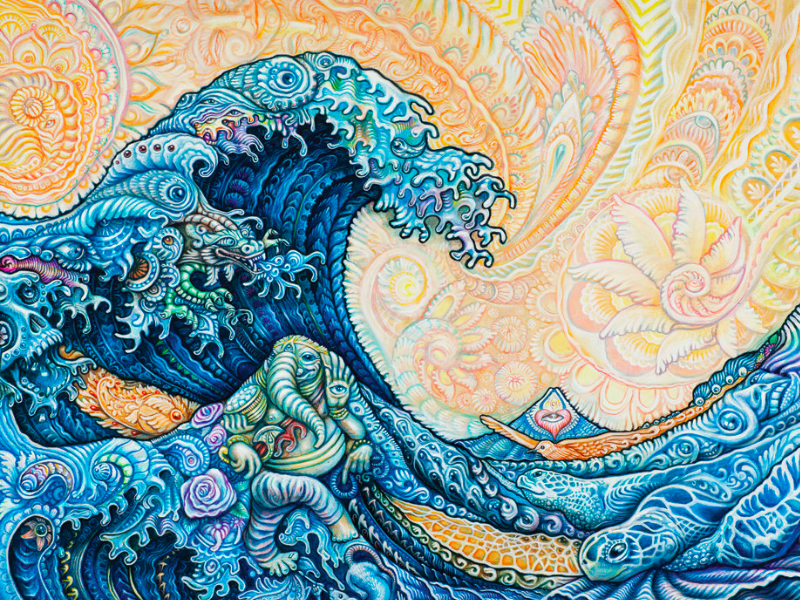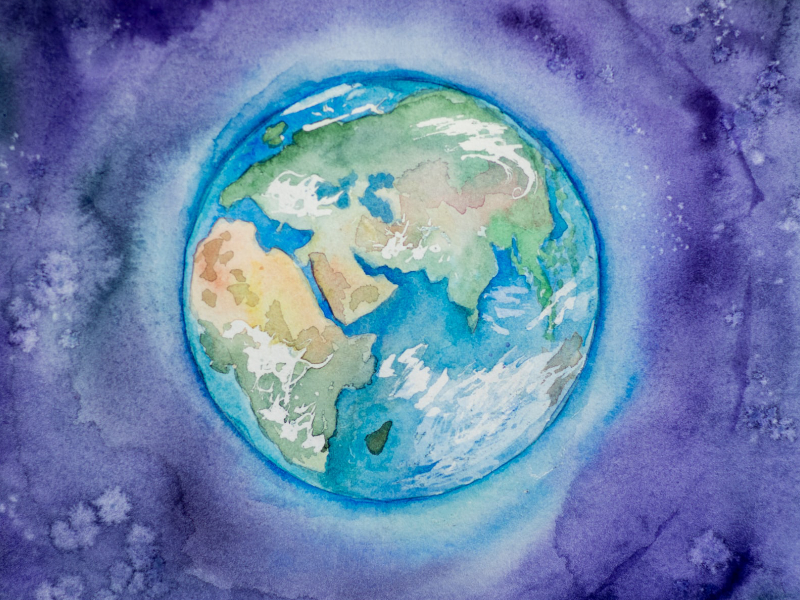What is Mindfulness?
– Cleaning Up Some Confusion –
Mindfulness practice is currently a fad in the West. And that’s wonderful — it’s great that, as a culture, we’re promoting more mindfulness and less mindlessness. But with its surge in popularity, there has also been a lot of misunderstanding as to what mindfulness is. The word as it’s used casually in English just doesn’t quite capture the fullness of the experiential state of mind the word points to.
It seems to be thought of more as a tool than a state of being. Many promote it as a way to manage manage anxiety and depression, and there are others who promote it as way to increase concentration and productivity. And there’s no real understanding at all of the historical and philosophical context in which it sits.
Now, just to be clear, mindfulness practice certainly can increase productivity and concentration. It can alleviate stress and manage anxiety and depression. And in fact, this is how it was presented to me, it’s how I stepped into the practice over a decade ago when I was dealing with chronic depression and suicidal ideation. So, great, if this is your motivation for practicing.
But, considered in its full historical and philosophical context, the practice is much more than a stress ball or corporate tool. It’s a profound means for looking at one’s own experience. It’s a method to bring about a radical change in one’s understanding — a way to gain insights about yourself, the world, and your place in it. It’s a way to dramatically transform your life and your being in the world.

So, today, rather than meditate, I’d like to just take this space to talk for a moment about what mindfulness is. Okay, so what is it?
Well, probably the most common response I hear from people is that mindfulness means to be present — that you are in the now. And yes, this is certainly a necessary aspect of mindfulness. You need to be here to be mindful. But that’s not quite the whole picture.
Joseph Goldstein, a wonderful vipassana teacher and long-time practitioner, often uses the example of a black lab to demonstrate why presence is not enough. Now, black labs, adorable creatures no doubt, are certainly in the presence moment — they’re not lost in thought, they’re not thinking about the future, not planning their day, or remembering some interaction from the past.
No, they’re fully immersed in the present moment, fully immersed in their sense of smell, interested in their surroundings, and happy to be with you. But…is a black lab really that mindful? Probably not.

Okay, so what else do we need? Well, another aspect to mindfulness is something scientists call meta-cognition — an awareness of awareness, knowing that you’re knowing.
This will become clearer with practice. But as you pay more attention you’ll increasingly notice that everything in your experience arises in a pairwise progression of knowing and object. There are bodily sensations and the knowing of bodily sensations, feelings and the knowing of feelings, sounds and the knowing of sounds, thoughts and the knowing of thoughts.
As you gain a bit of practice, you may be shocked to realize how much like the black lab we really are, how most of us most of the time aren’t really aware of the knowing side of things. We begin to see how easily identified we become with our thoughts and emotions, and how we act so many of them out with no real awareness around them.
So, as we move through this course, we’ll continue practicing bringing the knowing side of things into the field of awareness, we’ll learn how to prevent awareness from becoming lost in or identified with its contents. We’ll see how we’re barely beginning to scratch the surface of this meta-cognition, how we’re barely beginning to wake up to awareness itself.

Okay, so, in addition to being present, mindfulness also requires this knowing aspect — an awareness that we’re aware of some aspect of experience. Is there anything else?
Yes, and it’s a very important and powerful aspect of mindfulness, but one that can be easily obscured by the language we use to capture it. So, I’m going to approach it from two angles: first, by expressing what it isn’t and, then, by clarifying what it is.
So, as you may have already noticed, the word mindfulness is often used interchangeably with awareness, which is a big word in English, and can sometimes create confusion. And in these courses, I too will often use these words interchangeably. So, to hopefully prevent any confusion, let me clarify a bit what I mean when I use these words.
To be aware, or to be mindful, of some aspect of experience can easily be interpreted to mean simply acknowledging whatever it is, to be aware of it. When anger arises, for example, and we lose our cool, we can be aware that anger is present and that we’ve lost our cool. But this isn’t mindfulness, it’s not awareness in the way I’m speaking about it.
Mindfulness requires more — it requires that we don’t grasp at the pleasant and that we don’t push the unpleasant away. It requires an equanimous mind, a mind that sits in the middle-ness, a mind that holds every aspect of experience without reacting to it, one that is completely open, receptive, and still.
Pay close enough attention and I think you’ll notice that this is the nature of awareness itself. You’ll see that awareness is that which holds every aspect of experience without prejudices or biases. It’s that which simply knows. Any desire or aversion to our experience arises and fades away in awareness. It is not what awareness is.
So, again, when I ask you to be aware, I’m asking you to step into that formless open space of awareness, to occupy it, to embody it, to simply be that which knows, that which does not have preferences or biases, that which is open and receptive to the entirety of existence, that which is perfectly still and at peace.

Continue to practice, continue to cultivate this quality, continue to embody awareness itself, and watch it become a kind of superpower in your life. Notice, when you’re able to sit in true equanimity like this, how much more freedom you have — freedom to not react to people and situations, freedom to not react to or be compelled by thoughts and emotions. Watch the entirety of your being settle into an unshakeable peace.
Well, I think that’s enough concepts for today. We can talk all we want about awareness, about consciousness and its contents, but no concept can ever replace the direct experience of a thing. So, if you’re confused at all by what we discussed today, no worries. A conceptual understanding has no weight until the concepts make contact with experience. Exactly what mindfulness is will become clearer with practice.
Now, before you go, let me just finish by clarifying that mindfulness is not an end in itself. It is a means to cultivate wisdom. It is a way to examine closely and honestly what leads onward to peace, love, happiness, and freedom, and what leads to more suffering.
Anyway, thank you again for taking the time here today to understand your mind. You really are a remarkable creature. Until next time.
More Articles
“The Art of Bare Attention”
Today we’re going to talk about the ancient Buddhist practice vipassana, or insight meditation. Now, just to be clear, this is an entirely secular practice. It doesn’t require you to adopt any dogmatic beliefs…
“The Faceless Seer”
How do you hold your love? Do you hold her from stillness, with nowhere to go, with nothing to do? How do you hold your love? Do you hold her with acceptance, with open hands and arms, with unabashed…
“Everything Changes”
It’s no secret everything changes. Your experience this morning isn’t your experience now. Yet how many of us act like we really understand this? How often do we grasp onto the illusion of things…
“The Divine Connection”
How do you hold your love? Do you hold her from stillness, with nowhere to go, with nothing to do? How do you hold your love? Do you hold her with acceptance, with open hands and arms, with unabashed…






